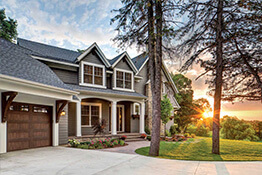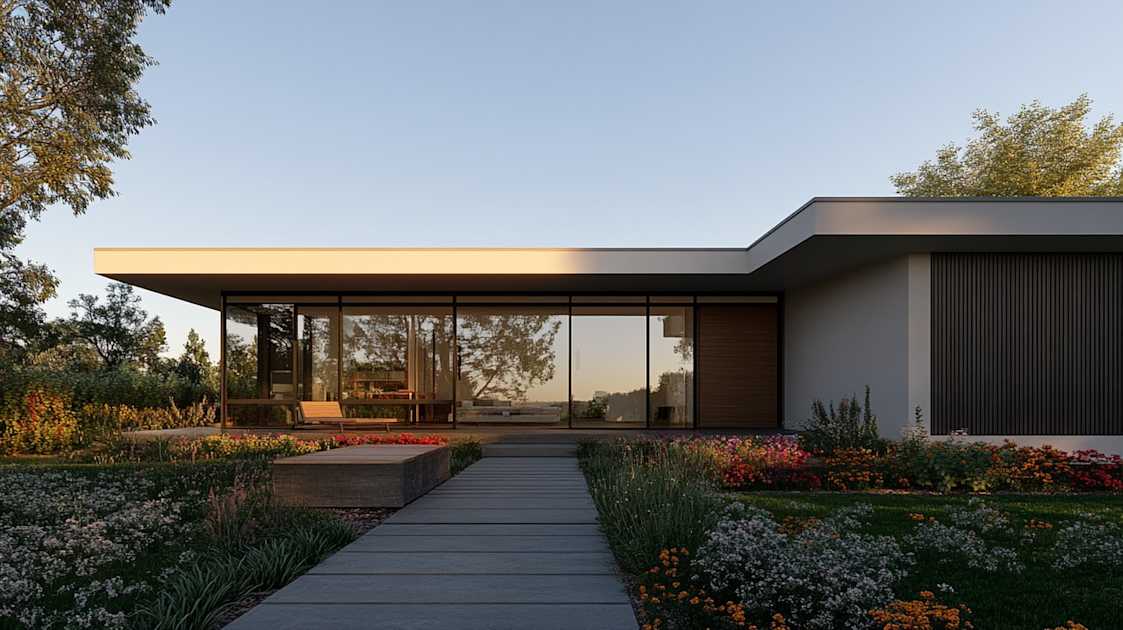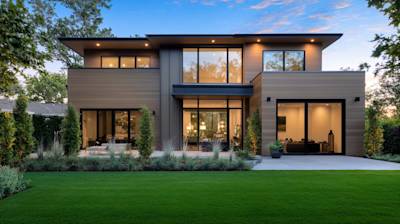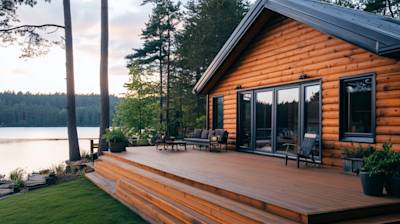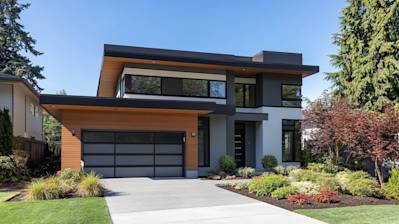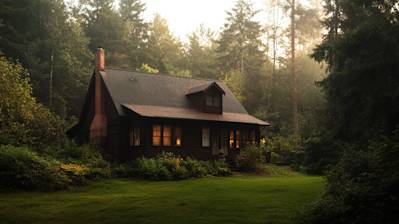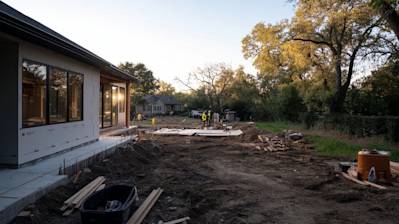Your home is your sanctuary, therefore understanding how to protect and improve it is crucial. One factor that significantly impacts your home's exterior appearance and durability is the siding material you choose. Among various options, aluminum siding has been a preferred choice for decades due to its numerous compelling attributes. This article will delve into an exhaustive exploration of aluminum siding, covering its characteristics, installation process, maintenance, and the environmental implications.
Overview of Aluminum Siding
Aluminum siding is a form of house siding that uses aluminum, a lightweight yet robust metal as its primary material. First introduced in the 1940s, it gained popularity in the 1970s as an alternative to wooden siding. It is manufactured in a wide variety of styles and colors, which can mimic other siding materials such as vinyl, wood, and even brick.
Features and Styles of Aluminum Siding
The appeal of aluminum siding lies in its vast range of features and the diversity in styles it offers:
- Durability: Aluminum siding is highly durable, weather-resistant, and can last over 40 years with proper maintenance.
- Cost-effective: It is comparatively less expensive than brick, stone, wood, and several other siding options.
- Versatility: It can be designed to mimic the appearance of other materials, providing a versatile aesthetic appeal.
- Maintenance-free: While it’s low maintenance in nature, it can also be painted over for a fresh new look.
Customizing your Home’s Appearance with Aluminum Siding
Aluminum siding offers an expansive range of design possibilities thanks to its numerous colors and styles, allowing homeowners to customize their facades precisely to their liking. These options include:
- Vertical or Horizontal Panels: Depending upon the architectural style of your home, you can choose between vertical or horizontal panels that give a distinct look to your facade.
- Smooth or Wood Grain Finishes: Aluminum siding can mimic the texture of wood through the process of embossing it during manufacturing.
- Various Colors: Aluminum siding comes in a vast color range, from subtle natural hues to vibrant, bold colors to match your taste.
The Installation Process of Aluminum Siding
The installation of aluminum siding is a systematic process requiring professional expertise. It involves several steps, including:
- Removal of old siding
- Checking and repairing underlying wall
- Installing a vapor barrier
- Application of corner and base trim
- Siding panel installation
- Door and window trim installation
Caring for and Maintaining your Aluminum Siding
Though aluminum siding is low-maintenance, prolonging its lifespan requires regular upkeep and care. Some maintenance tasks include:
- Painting: To refresh the appearance of your home, Aluminum siding can be painted every 5-10 years.
- Cleaning: It can be cleaned with mild detergent and water. Regular cleaning prevents the accumulation of dirt and mold.
- Repairing: Damaged siding panels should be promptly replaced to ensure structural integrity and prevention of water damage.
Aluminum Siding and the Environment
In the era of environmental-focused mindset, it’s comforting to know that aluminum siding holds its own regard for sustainability and green aspects:
- Aluminum is a highly recyclable material. The process requires less energy compared to producing new aluminum.
- Many manufacturers produce aluminum siding using recycled materials, contributing to waste reduction.
- The durability and longevity of aluminum siding mean fewer resources and energy are spent on replacement and repairs.
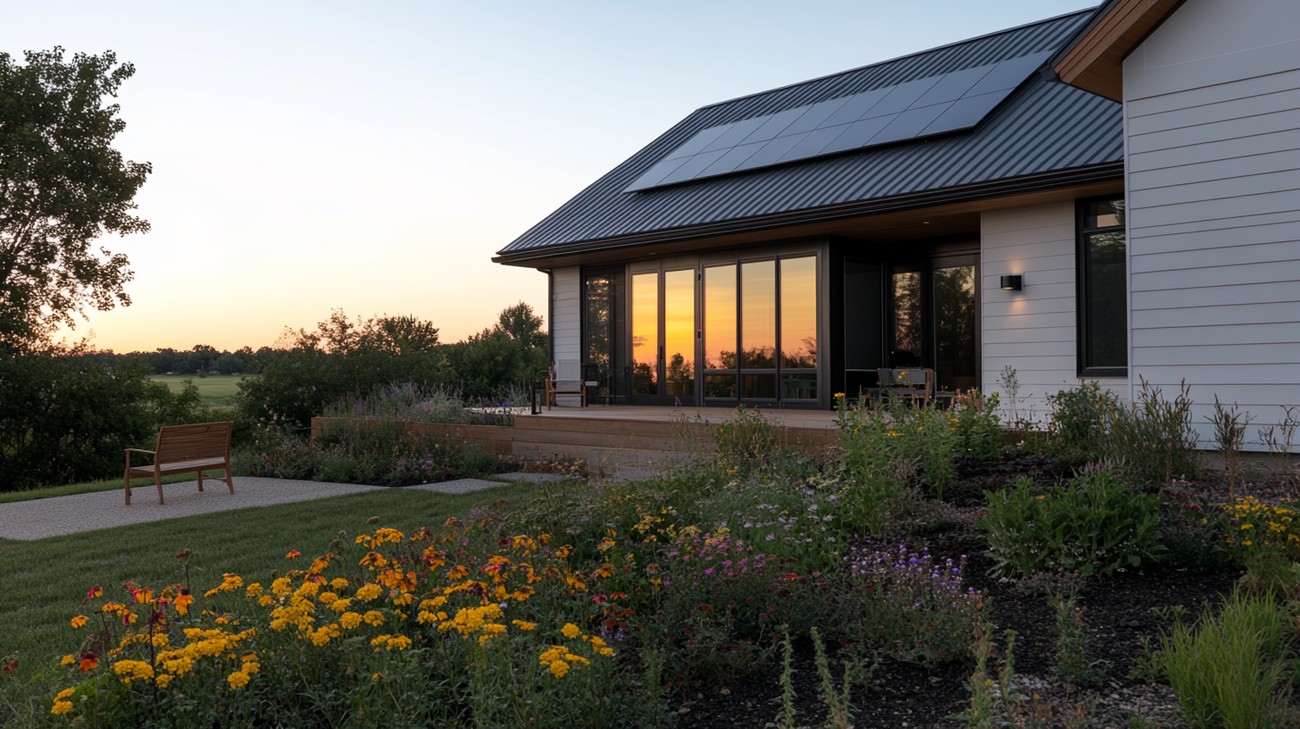
Frequently Asked Questions about Aluminum Siding
2. How does Aluminum Siding compare with Vinyl Siding?
Aluminum and vinyl siding are often compared due to their similarities. Both offer a long lifespan, are low-maintenance, and offer various customization options. However, aluminum siding has an upper hand when it comes to defending against harsh weather. It does not warp or crack in extreme heat or cold as vinyl siding might. Moreover, aluminum siding is considered more environmentally friendly than vinyl because it’s recyclable.
3. How much does Aluminum Siding cost?
The cost of aluminum siding varies depending on the thickness, design, and color of the material, as well as the cost of labor in your region. Generally speaking, you can expect to pay between $3 to $6 per square foot for the materials. For the installation, the cost usually falls around $2 to $5 per square foot, depending on the complexity of the job.
4. Can Aluminum Siding be painted?
Yes, aluminum siding can be painted. In fact, this is one of the advantages of using aluminum siding; it can be painted any color, allowing owners to customize its appearance. Before painting, it is crucial to clean the surface properly and use a primer. It is also recommended to use 100% acrylic paint for the best result.
5. How long does Aluminum siding last?
With the correct installation and regular maintenance, aluminum siding can last anywhere from 20 to 50 years. The lifespan of your aluminum siding could be kept at the upper limit if you take the necessary steps to avoid damage and correct small issues promptly, such as repainting when the color fades or ensuring the siding is cleaned regularly.
6. Is Aluminum Siding considered environmentally friendly?
Yes, aluminum siding is usually considered environmentally friendly. The main reason is that it’s recyclable. Unlike some other siding options, when aluminum siding reaches the end of its life span, it can be recycled rather than ending up in a landfill.
7. Can Aluminum Siding be Installed over Existing Siding?
In most cases, aluminum siding can indeed be installed over existing siding. However, it is essential to have a professional assess the condition and structure of your existing siding. They will determine if it's stable enough to support the new siding. If there are existing issues like rot or infestation, those should be addressed before the installation of new aluminum siding.

Pros of Aluminum Siding
Durability
Resistance to Elements
One of the biggest advantages of aluminum siding is its resistance to different weather conditions. Aluminum can withstand rain, snow, sleet, and intense sunlight without showing any signs of damage or wear. Also, it's impervious to rot and won't be affected by termites or other insects.
Low Maintenance
Aluminum siding requires minimal maintenance. You won't need to spend a lot of your precious time servicing your siding. Regular cleaning with a hose can make aluminum siding look like new. Plus, it doesn't require any painting or sealing.
Lifespan
An aluminum siding can last for several decades. The typical lifespan of an aluminum siding, if well maintained, can be anywhere from 40 to 60 years. This long lifespan can make it a worthwhile investment, especially if you are planning to stay in your house for a long time.
Versatility
Aluminum siding comes in a variety of styles, textures, and colors. You can choose from horizontal and vertical panels, shakes, shingles, fish scales, lap, or beaded designs. It can also be painted to match the color of your home, giving you vast customization options.
Cost-Effective
Aluminum siding tends to be cheaper than other options like vinyl and wood. This aspect can make it appealing to budget-conscious homeowners. Furthermore, due to its durability and low maintenance requirements, the long-term costs associated with aluminum siding is relatively low.
Environmentally Friendly
If you're an environmentally conscious homeowner, you'll appreciate that aluminum siding is recyclable. At the end of its lifecyle, it can be melted down and reused. This characteristic significantly reduces its environmental impact compared to several other types of sidings.
Cons of Aluminum Siding
Appearance Over Time
Though aluminum siding ages better than many materials, it isn’t invincible. Over time, especially in areas subjected to harsh weather conditions, aluminum siding can show signs of wear. It can fade, dent, and scratch over time, leading to an uneven appearance.
Noise
One of the biggest disadvantages of aluminum siding is that it can be noisier than other types of siding material. During high winds or heavy rain, the siding can produce a tinny, rattling noise, which can be irritating for some homeowners.
Energy Efficiency
While aluminum siding is better than certain materials when it comes to insulation, it is less energy efficient compared to options like vinyl or wood. Homeowners committed to reducing their home's energy consumption might prefer these alternatives.
Color Limitations
Even though aluminum siding can be painted, it's important to note that only light to medium colors are suitable. Dark colors tend to absorb more heat causing potential damage or warping to the siding.
Difficulty of Repair
Aluminum siding repair can be quite challenging. Dents and scratches cannot be easily patched over. You'll in most cases need to replace the entire piece, which can be quite a task and might require professional help.
Conductivity
Aluminum, being a metal, is a good conductor of heat. This could result in heat being conducted away from your home in winter, and towards your home in summer, thus affecting the efficiency of your heating and cooling systems. Installing a good insulation can help counter this, but that will be an added cost.

Myths and Misconceptions about Aluminum Siding
When aluminum siding hit the home exterior market in the 50s and 60s, it was hailed as the next big thing—a cheaper, more durable alternative to traditional materials. But despite its popularity, several myths and misconceptions have arisen about aluminum siding that deserve to be examined and debunked.
Myth 1: Aluminum Siding is Not Energy Efficient
Many people mistakenly believe that aluminum siding is not energy efficient. This myth likely arises from the misconception that because aluminum is a metal, it must be poor at insulation.
Fact:
Aluminum siding, when installed correctly, actually has a fantastic thermal efficiency rate. In fact, many manufacturers offer insulated aluminum siding, which employs a backing of foam insulation for additional thermal resistance. Properly installed and insulated aluminum siding creates a protective envelope around your home, keeping you warmer in winter and cooler in summer.
Myth 2: Aluminum Siding is Not Durable
Another misconception is the belief that aluminum siding is not durable, or that it's easily damaged. This may stem from the recognition of aluminum as a lightweight material.
Fact:
Contrary to this belief, aluminum siding is very durable and has a decent lifespan. It is resistant to rot, termite-damage, and it never rusts. In fact, with the right care and maintenance, aluminum siding can last for up to 40 years, or even more.
Myth 3: Aluminum Siding is Noisy
A common myth is that aluminum siding is noisy, especially during wind or rain. This belief likely grew from the fact that aluminum is a metal, and metal typically creates noise when struck by various elements.
Fact:
While it's true that loose or poorly installed aluminum siding can create noise during windy conditions or rain, properly installed aluminum siding is generally quiet. To avoid noise issues, it is critical to ensure the siding is securely attached to your home. Additionally, insulated aluminum siding can also solve this problem, adding an extra barrier against noise.
Myth 4: Aluminum Siding Fades & Chalks Easily
There is a widely-held misconception that aluminum siding is prone to fading and chalking over time. This can lead homeowners to pre-emptively dismiss aluminum siding as an option.
Fact:
While aluminum siding can fade or chalk over time due to exposure to the elements, advancements in modern manufacturing processes and finishes have largely solved this problem. Today’s aluminum siding often features baked-on or anodized finishes that resist fading and chalking, ensuring a vibrant, low-maintenance finish for many years.
Myth 5: Aluminum Siding is Costly to Maintain
Another common belief is that maintaining aluminum siding costs a lot of money. Many homeowners hold this myth, believing that the siding needs regular repairs or replacements.
Fact:
The truth is, aluminum siding is quite low-maintenance compared to other siding materials. Apart from occasional cleanings and cosmetic touch-ups such as paint, aluminum siding requires little ongoing upkeep.
Myth 6: Aluminum Siding Lowers Home Value
Some homeowners worry that installing aluminum siding will lower their home's value. This concern is often due to the belief that it's less attractive or desirable compared to other materials.
Fact:
While home values can certainly be impacted by various factors, aluminum siding is not one of them. In fact, new, well-maintained aluminum siding can actually increase a home's curb appeal and, in turn, its market value. The finish on the aluminum siding can give a home a fresh, clean, and updated look that potential buyers appreciate.
By dispelling these persistent myths and misconceptions, homeowners can gain a clearer understanding of the significant advantages that aluminum siding provides. As with any home improvement decision, it's essential to do your research to determine the best choice for your specific needs and preferences.
Summary
So, there you have it! Whether you're looking to renovate your home or build from scratch, aluminum siding stands as an excellent choice. It's not only cost-effective, but with its recyclability and longevity, it's an environmentally friendly option as well. Its minimal upkeep is truly a blessing for busy homeowners, and best of all, it keeps its good looks for years to come.
When it comes to home improvement, aluminum siding holds its own with its many benefits. It doesn't rot like wood, and it doesn't warp like vinyl, allowing for a sturdy and durable covering. Beyond protecting your home’s structure from the elements, it makes for a sleek and polished exterior that adds a touch of class to any dwelling.
Remember, the selection of a proper siding material could significantly influence the curb appeal, energy efficiency, and overall durability of your home. For someone who wants it all – striking elegance, lasting durability, and guaranteed value for money – aluminum siding can be the game-changer they're looking for. Don’t be surprised if your neighbors start showing up at your door, asking about your house's stylish makeover!
About US Quality Construction of Columbus
At US Quality Construction of Columbus, we are more than just a construction company in Columbus, OH. We are your trusted partner in converting your construction dreams into remarkable spaces that complement your lifestyle. Whether it's a modern, luxurious home, a functional office, or a cozy commercial space, we pride ourselves on our versatility, quality workmanship, and commitment to customer satisfaction. Our approach is rooted in integrity, keeping the lines of communication clear, and offering cost-effective solutions. With years of experience under our tool belts, you can count on our team to deliver a top-notch construction service that stands the test of time.
Tags: Home improvement, Exterior siding, Aluminum construction,
